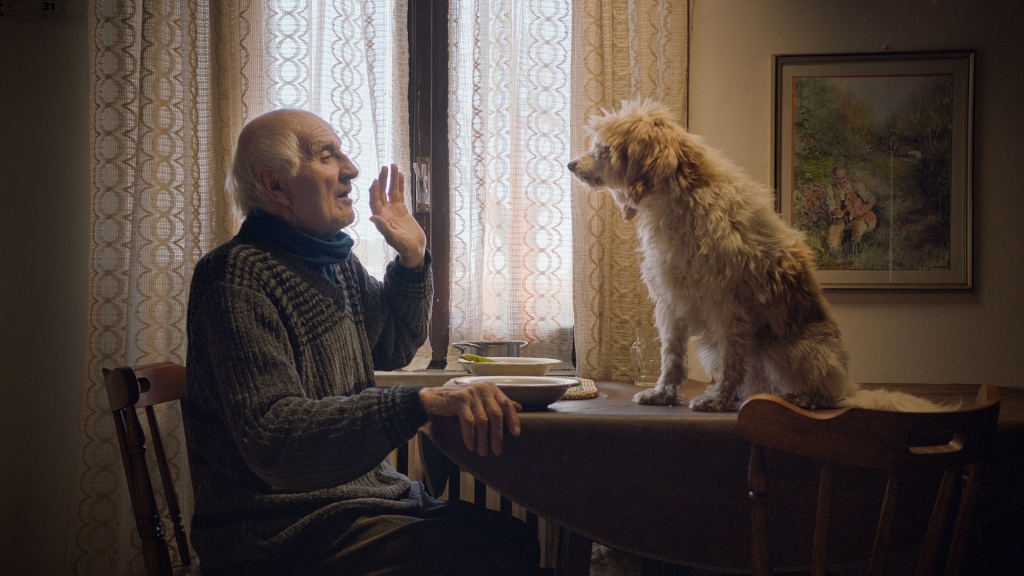

Lifting a wine glass to their nose, the tasters inhale deeply. It’s not a beverage they are evaluating but a white truffle, placed at the bottom of a glass for the best olfactory scrutiny.
The scene is the culmination of a process that begins with men, and their bounty-sniffing dogs, who labor in the forests of Northwest Italy in an increasingly antiquated lifestyle. The filmmakers follow the process through the eyes of half a dozen or so individuals dedicated to the rarified pursuit.
Also known as the Piedmont or Alba truffle, the knobby tuber is one of the world’s most captivating delicacies, commanding sky-high prices and luring elite chefs with its garlicky flavor and deep musky aroma. Such a valuable ingredient tends to be used sparingly—shaved over pasta, risotto, or, as we observe here, a humble egg, accompanied by an aria from Puccini’s Tosca.
Yet, the origins of the elusive fungus are far from the modernized world, where men primarily in their 70s and 80s walk the same paths they have for decades, with their closest canine companions who sniff out and dig at the root of a hardwood tree for their target.
The opening scene ushers in 84 minutes of spectacular cinematography. From drone height, a hunter and his dog appear miniscule in the context of an enormous forest, signaling that this way of life is completely in tune with nature. It’s an analog world too, seemingly unchanged for decades, but at risk of rapid decline. Over time, young people have increasingly abandoned the area for school and work, and the few remaining hunters are reluctant to train a new generation.
We view the hunting process of trudging through piles of leaves in the muddy, autumnal forest in handsomely composed scenes that have little editing. We also peer into quotidian routines through episodic vignettes, such as a hunter getting a haircut or drinking from an ancient stone fountain, man and dog being blessed by a priest (to preserve the canine’s sense of smell), and even a furtive transaction for truffles in an alley after dark. Additionally, footage from the point of view of one trusted collaborator and friend, a panting hound, is shot with a camera strapped to its head.
But the main focus is the profiles of the quirky cast of characters who continue their traditions with heart and soul. Highlights among them are three idiosyncratic standouts.
Climbing out the window in the middle of the night despite his wife’s protestations, blue-eyed Carlo is accompanied by his faithful Titina to a spot where truffles are plentiful. The location is undisclosed even to friends and loved ones, as it’s a pot of gold that could disappear if revealed. It’s no surprise he, at 87 years old, lands in the doctor’s office after a fall.
Unlike Carlo, Aurelio is single, and his beloved canine, Birba, accompanies him at the dinner table for truffle cuisine. He celebrates her birthday with hand-fed meat and serenades her with words of concern about whether he can find someone who will one day take over her care.
Long-haired Angelo is done with truffle hunting, cynical that greedy newcomers are disrupting the land and not interested in bonding with their dogs, as he has with Nina. He’s distressed that rivals steal from each other or even set poison for the trained canines. Pounding a manual Olivetti typewriter in his vintage-styled abode, he composes an angry complaint to authorities. Nostalgia infuses Angelo’s worries, but audiences are sure to appreciate that there is still some life in the age-old practice that lures truffle hunters to their goal, which centers on the pursuit, as most of the money made in the trade goes to the middle man.
Directed, produced, and shot by Michael Dweck and Gregory Kershaw, the Italian-language film is amusing and life-affirming, a gem in a sea of current documentaries exploring the state of the world.
















Leave A Comment